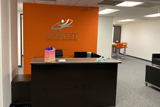F1 Student Visa
All international students who wish to study in the United States must obtain a student-specific visa, the F-1 STUDENT VISA.
Most international students who wish to study in the United States are issued an F-1 Visa. However, becoming a student in the U.S. involves more than just a simple application. The process requires substantial paperwork and several important steps before the U.S. government grants approval.
To successfully obtain an F-1 Visa, you must complete the following steps:
1. Receive acceptance from a U.S. school
2. Obtain the I-20 Form & acceptance letter from the school
3. Pay the SEVIS I-901 Fee
4. Complete the F-1 Visa application (Form DS-160)
5. Schedule your F-1 Visa interview
6. Attend the visa interview
7. Await your F-1 Visa decision and approval
Acceptance from a school
The first and most crucial step in obtaining an F-1 Visa is receiving an acceptance from a school. Since many F-1 visa applicants are language students, there are numerous language schools approved by SEVP — the Student and Exchange Visitor Program. A complete list of SEVP-certified schools is available on the official SEVP website:
https://www.ice.gov/sevis
https://studyinthestates.dhs.gov/assets/certified-school-list-01-22-25.pdf
Join the Campaign !
Receive I-20 Form
The I-20 Form is issued by SEVP-approved schools and serves as official documentation of a student’s F or M visa status. It includes a SEVIS ID number (individually assigned to each student) and a SEVIS school code for that particular school. The I-20 form consists of three pages: the first two have your personal and academic information, while the third page provides important I-20 instructions. If any personal information changes, the school must issue an updated I-20 reflecting those changes. We will also issue you an acceptance letter, which must be submitted along with your I-20 during your interview at the U.S. embassy.
SEVIS I-901 Fee Payment
SEVIS (the Student and Exchange Visitor Information System) is a web-based system used by the U.S. government to collect and manage information of non-immigrant students who apply through the SEVP, Student and Exchange Visitor Program. Paying the SEVIS fee is a mandatory step to move forward in the F-1 Visa application process. It should be paid after your I-20 is issued and before your interview.
https://www.FMJfee.com
F1 Visa Application Form (Form DS-160)
The F-1 Visa application form is officially known as DS-160 Form, which is used for all non-immigrant visa applications. This is an online form that must be completed electronically and printed out. International students should carry a copy of their DS-160 form with them throughout the visa process, until they receive full F-1 Visa approval.
Since the DS-160 is detailed and requires accurate information, it’s important to complete it carefully and without rushing. Taking your time at each step of the F-1 Visa process is in your best interest to avoid errors or delays. Additionally, the DS-160 visa application fee must be paid as part of the process. Once the form is submitted and the fee is paid, you’re well on your way toward securing your F-1 Visa.
Schedule an F1 Visa Interview
You will need to attend an F1 visa interview, during which a consular officer will determine your eligibility for a student visa to the United States. The U.S. Embassy or Consulate is responsible for scheduling this interview. An F-1 student visa can be issued up to 365 days before your program start date. However, you may enter the U.S. no earlier than 30 days before your official start date shown on your I-20.
You will also need to bring certain documents to your F-1 visa interview. (We will provide a complete list of all required documents at the end of this page.)
Attend your F1 Visa Interview
During your F1 visa interview, most of the questions will focus on your educational goals. Since the questions are selected randomly, you should be prepared to answer questions about your purpose for studying and living temporarily in the U.S. Even if you have official documents showing your English proficiency, the interviewer may still assess your spoken English skills during the interview. Once the interview is over, all that’s left to do is wait for the results.
DOCUMENTS NEEDED FOR F-1 STUDENT VISA INTERVIEW
Be sure to bring all receipts for the forms you have submitted, as you will need them during your interview. You must also pay the F1 visa application fee and bring the payment receipt as proof. Below is a list of all the documents you are expected to present at your F1 student visa interview:
1. A valid passport (must be valid for at least six months beyond your intended stay in the U.S.)
2. A completed DS-160 form
3. Receipts for all application and service fee payments
4. Two passport-style photos that meet U.S. visa photo requirements
5. A completed and signed I-20 form
6. Supporting documents related to your educational background, such as:
• Original transcripts and diplomas from previous schools
• Standardized test scores, typically TOEFL or IELTS





